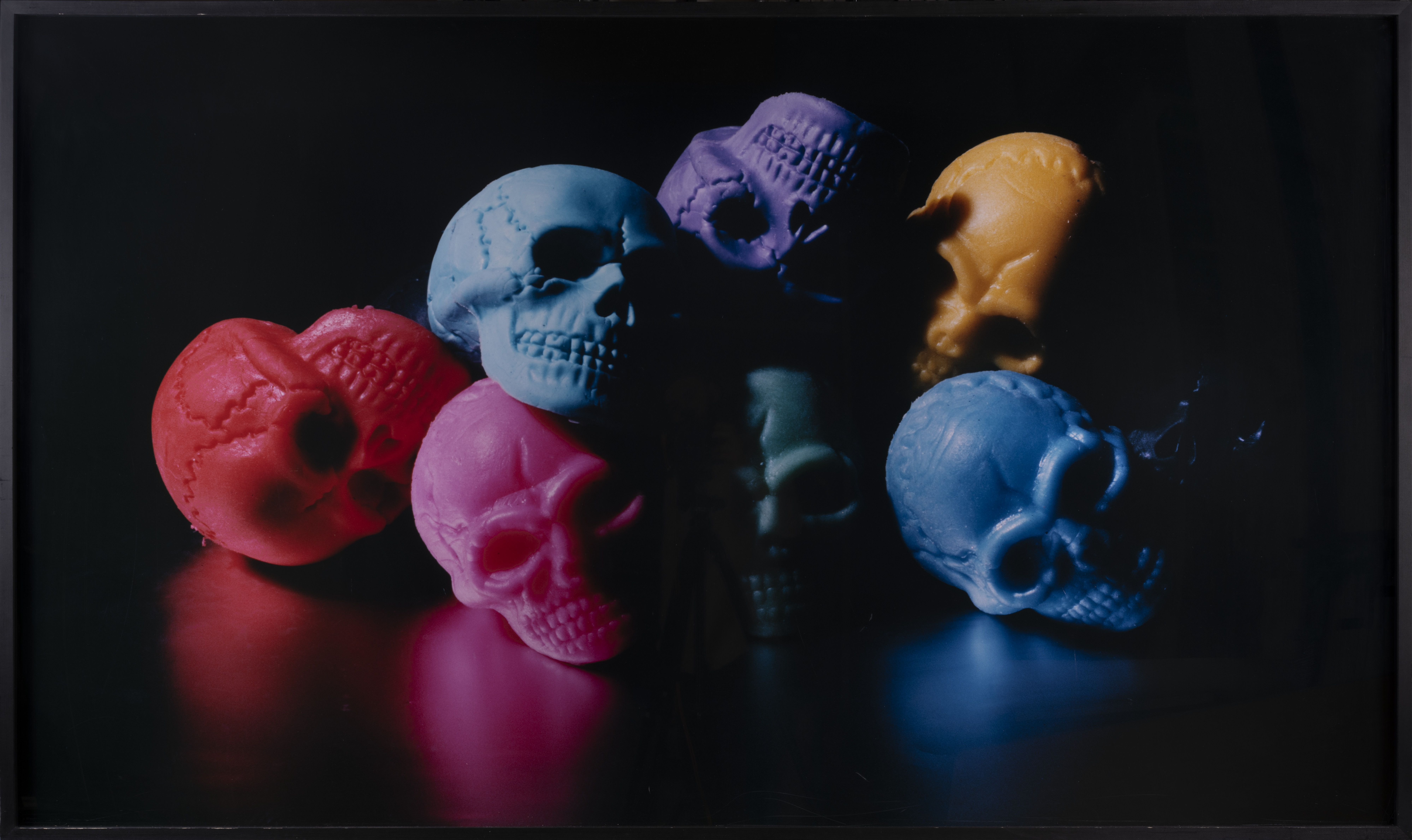Tim Head works in a variety of mediums, including installations, photography, paintings, and digital media. Over the past forty years, Head’s artistic practice has consistently explored instability and uncertainty through the fragility of images, differing perceptions, and the individual's connection to the broader world. All unified by a consistent thematic underpinning, his creations serve as a profound investigation into contemporary reality. Head gained recognition in the 1970s with installations employing mirrors and projections, manipulating spatial perceptions in settings like the unassuming white brick stairwell of the Whitechapel Gallery in 1974. Since the 1990s, Head has developed an innovative and important body of work focused on an exploration of digital space.
Still Life (Erasers) (1985) is from an important series of large-scale photographic works made by Head in the mid-1980s, signalling his transition away from the immersive installations of the 1970s that cemented his international reputation, and before his forays into painting (1986-1990) and explorations of digital media in the 1990s and 2000s. The work depicts a pile of brightly coloured erasers (for rubbing out pencil marks) set against a dark background. A memento mori for the late 20th Century, it is at once stark and playful, the brightly coloured mass-produced objects (surely intended for the pencil cases of schoolchildren) contrasting with notions of death and erasure. These continue the play with illusion but also often make a political point, as in Still Life (Erasers), which shows a mound of multi-coloured erasers shaped like skulls and others in the form of missiles.
Nottingham City Museums & Galleries collects contemporary British Art who have made an impact on the British art scene since the 1980s. The photography collection includes work which deals with issues around cultural and personal identity making Still Life (Erasers) very fitting as it explores the extent of life and death. Moreover, Still Life (Erasers) links to the historic memento mori still life paintings and mourning jewellery in NCMG’s collection, offering a 20th-century prospective on the fragility of life.


